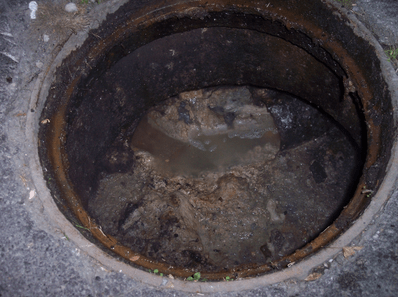Did you know? “Flushable” Wipes, Fatbergs and Costly Plumbing Problems
Wet wipes have been around since the 1960s, but it wasn’t until the mid-2000s that they were marketed to adults as an alternative to toilet paper. Sales of flushable wipes are expected to top $3.5 billion in 2023, with advertisers claiming the products are flushable. While they may be labeled as such, it is misleading. That’s because they don’t disintegrate like toilet paper.
ConsumerReports.org tested several brands of flushable wipes to see if they broke up in water and were sewer and septic safe like their labels stated. When the wipes were immersed in water for ten minutes, they showed no signs of dissolution. Traditional toilet paper was put through the same test and broke up and dissolved within seconds.
“In fact, with the amount of wipes found fully intact in our wastewater infrastructure it is clear they do not dissolve at all,” said Morgan Dadgostar, regional wastewater system manager at North Texas Municipal Water District. “Flushable wipes cause blockages in our sewer pipes and wreak havoc at our pump stations and treatment plants. They can also cause blockages in household plumbing leaving homeowners with a hefty plumbing repair bill.”
Wastewater utilities encourage people not to flush wipes as their failure to break down or dissolve can also contribute to sewer blockages including fatbergs. A fatberg is a large, rock-like mass of waste matter formed by the combination of flushed non-biodegradable matter – such as wipes – with fats, oils, and grease deposits. The resulting lumps of congealed material can be as strong as concrete and require special equipment to remove. The handling of this buildup poses a serious problem in wastewater collection and treatment. Fatbergs are costly to remove and have given rise to public awareness about what is flushable and what is not.
In 2017, a 130-ton fatberg was famously removed in London. It took eight workers working seven days a week for three weeks to remove. A year later workers in Detroit, Michigan, removed a six-foot tall by 100-foot long 11-ton fatberg at a cost of $100,000. After studying samples, officials found plenty of wipes. Municipalities have seen about a 35 percent increase in pump repairs and clogged sewer lines, and utilities spend millions installing special grinding systems.
Locally, NTMWD estimates that 5,000-8,000 pounds of wipes are flushed into the wastewater system annually. This amounts to an additional annual cost of $70,000-$100,000 to maintain our service area which could be avoided if wipes were properly disposed of.
“There is an enormous cost to wastewater system clogs. Fatbergs and other clogs caused by wipes can cost millions associated with sewer backup cleanup, clog removal, and equipment repair each year, and ultimately, utilities have to pass on this cost to customers through their water bills,” said Dadgostar.
So why are some wipes labeled as “flushable”?
“There are no legal requirements that a product must meet to claim that it is flushable,” said Dadgostar. “There is no standard to enforce, but there are efforts with lawmakers to correct this issue.”
On July 21, 2021, Congress introduced the Wastewater Infrastructure Pollution Prevention and Environmental Safety Act to help address the extensive and expensive problems caused by wet wipes. The legislation aims to establish “Do Not Flush” labeling requirements for product packaging. The bill is supported by national, state, and local sanitation, public works, and clean water agencies and organizations including the National Association of Clean Water Agencies.
So, what can we do? The key is to remember the three Ps: pee, poo, and (toilet) paper are the only things that should be flushed. Everything else – including flushable wipes – should be disposed of in the garbage.
“The truth is flushable wipes aren’t really flushable. They do not break down,” said Dadgostar. “While the packaging says ‘flushable’ it may still clog your toilet and home plumbing. Wipes also clog both private and public wastewater collection pipes. Once they make their way to wastewater treatment facilities, they clog screens, pipes, pumps, etc.”
Do the dissolution test for yourself! Put a piece of toilet paper in a bowl full of water, and a wipe in another bowl. Let it sit for ten minutes and see what happens. The toilet paper will fully dissolve, while the wipe will remain intact. Here’s a video showing the test. This is a great opportunity to teach your children and loved ones about the potential pitfalls of flushing wipes, and to avoid costly plumbing problems in the future.
